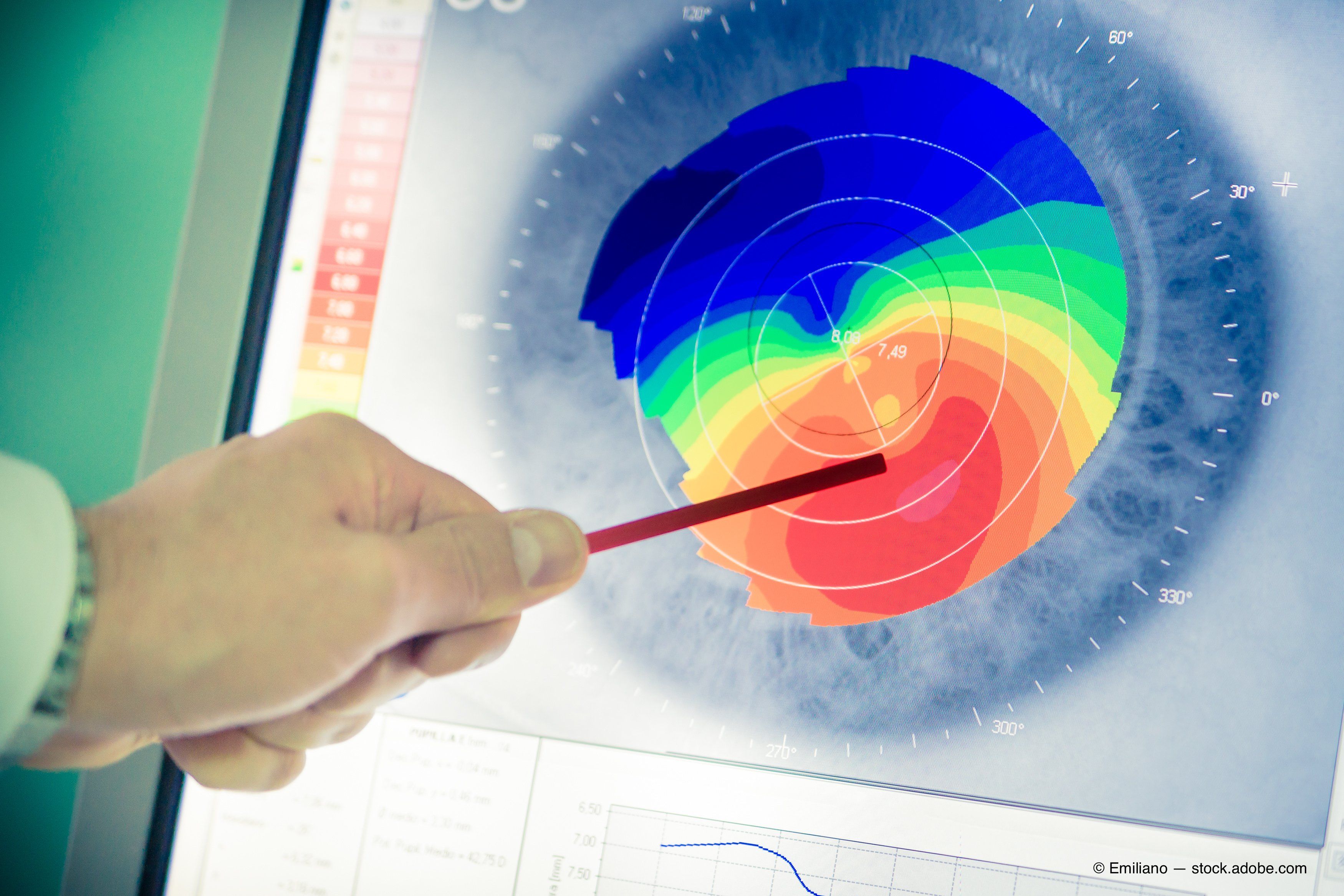Article
Color-LED topography measures corneas consistently in analysis
Author(s):

David P. Piñero, PhD, and colleagues set out to evaluate the intrasession repeatability of anterior aberrometric measurements obtained by the Cassini and to compare it with those obtained by the Pentacam in healthy eyes.
This article was reviewed by David P. Piñero, PhD
Color light-emitting diode (LED) technology can consistently measure anterior topography, aberrometry, and total corneal astigmatism, according to David P. Piñero, PhD.
But these measurements cannot be used interchangeably with those obtained through Scheimpflug imaging (Pentacam, Oculus), said Dr. Piñero of the University of Alicante, in Alicante, Spain.
One technology (Cassini Total Corneal Astigmatism) is a multispot (up to 700), multicolor (red, yellow, and green) LED tear film-reflection topography imaging system designed to avoid source mismatch and decrease artifacts caused by shadows.
Previously by Larid Harrison: Research shows small-aperture IOL is bringing stability into focus
The system uses ray tracing to process every three spots identified by the software and to define the relevant local elevation. Employing the reflection of seven infrared LEDs for second Pukinje imaging, it measures the center of the posterior corneal surface.
“This Cassini technology has shown its usefulness to measure the shape of the anterior corneal surface in different types of eye including keratoconus and scarred corneas,” Dr. Piñero said. Several studies have evaluated the intrasession repeatability of some measurements the device provides. “But I haven’t found any paper evaluating the intrasession repeatability of corneal asphericity or corneal high order aberrations provided by this device,” he said.
And he noted that papers by other authors, showed clinically relevant differences in keratometry and other parameters between the Cassini and other devices.
Diving deeper
Dr. Piñero and colleagues set out to evaluate the intrasession repeatability of anterior corneal topographic and aberrometric measurements obtained by the Cassini and to compare it with those obtained by the Pentacam in healthy eyes.
They made this comparison in 35 healthy eyes of 35 patients, with an age range of 16 to 66 years at the, University of Alicante. They obtained three consecutive measurements in each patient to assess the intrasession repeatability. Then they obtained one measurement in each patient with the Pentacam system. They found that the within-subject standard deviation for keratometric readings were 0.02 mm with intraclass correlation coefficient readings of at least 0.992.
In addition, they found the intrasession repeatability for anterior astigmatic measurements was 0.16D, and for total astigmatic measurements it was 0.05D. The intraclass coefficient readings were 0.930-0.978. They found a standard deviation of 0.06 mm for asphericity and 0.03 mm for corneal diameter, “which can also be considered as a good level of intrasession repeatability,” Dr. Piñero said.
Related: Latest tonometry devices all have their pluses and minuses
When analyzing aberrometry repeatability, however, researchers found “something curious,” he said. “We obtained very good correlation coefficients and intraclass correlation coefficients, and within subject standard deviations, for all this Zernike terms for the second order to the fourth order,” he said. “But when we analyzed one component of the secondary astigmatism and one component of the quadrafoil, we obtained a limited intrasession repeatability.”
He attributed this discrepancy to the very small amount of aberration; even a slight difference in a very small difference can appear to be a statistically significant variation, he said. “This is probably the reason, but we have to investigate more.”
On the other hand, the differences between the readings of the Cassini and Pentacam devices were statistically significant for keratometry, total astigmatism, asphericity, and in some Zernike terms.
“If we analyze the ranges of agreement between these two devices, we find, that for keratometry it was more than 0.06 mm which can be considered clinically relevant because this can have an impact, for example, in higher power calculation of more than 0.5 D,” he said.
There were differences in astigmatic corneal components of more than 0.69D, in asphericity of more than 0.35 mm. There was a trend for the Cassini of obtaining steeper values of curvature, as well as higher values of total corneal astigmatism.
In Zernike terms, there were differences of 0.2 μm for the second order, 0.13 μm for the third order, and 0.01 μm for the fourth order.
David P. Piñero, PhD
E: david.pinyero@gcloud.ua.es
This article was adapted from Dr. Piñero's presentation at the 2019 congress of the European Soceity of Cataract and Refractive Surgeons. He did not indicate any proprietary interests relevant to the subject matter.
Newsletter
Don’t miss out—get Ophthalmology Times updates on the latest clinical advancements and expert interviews, straight to your inbox.




